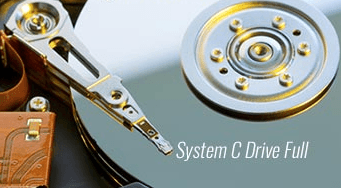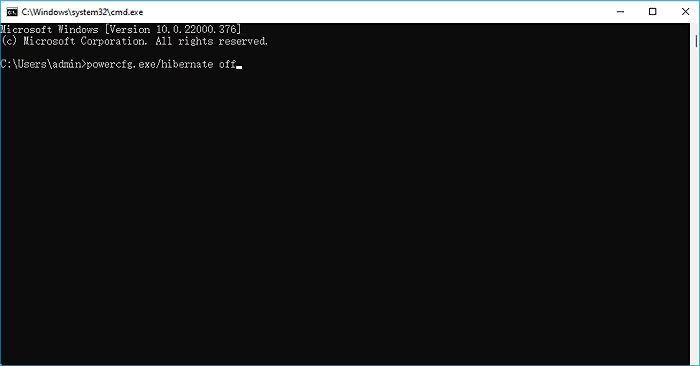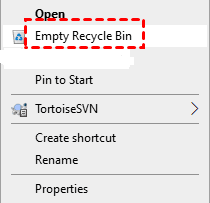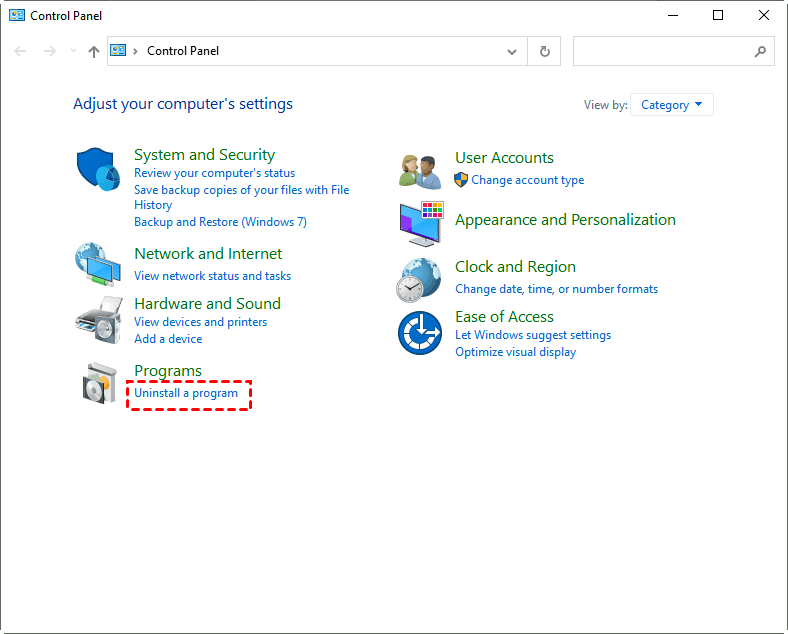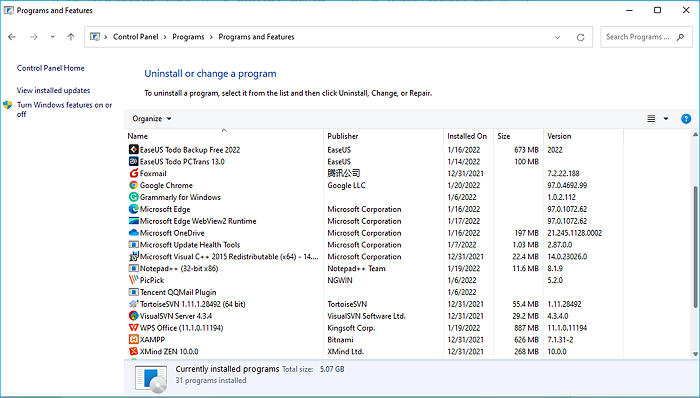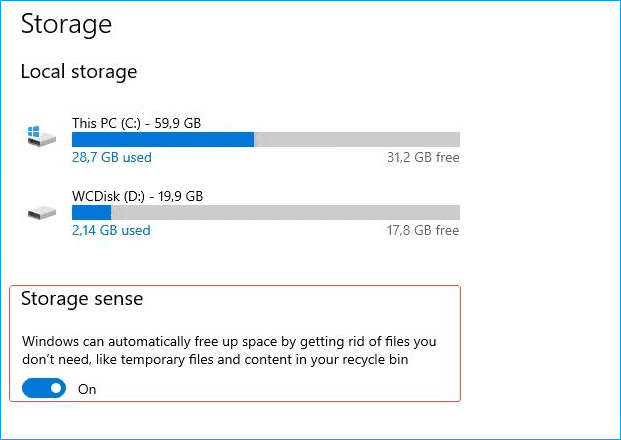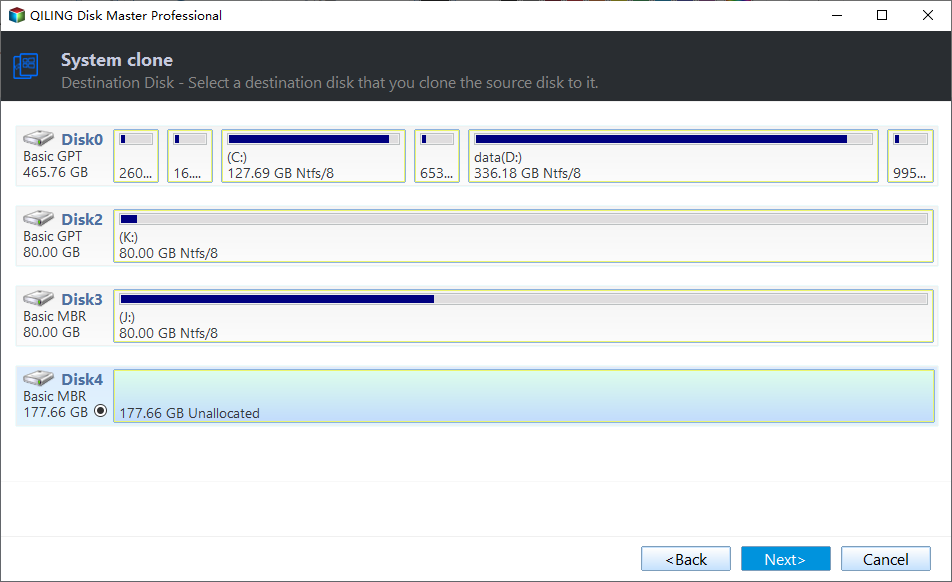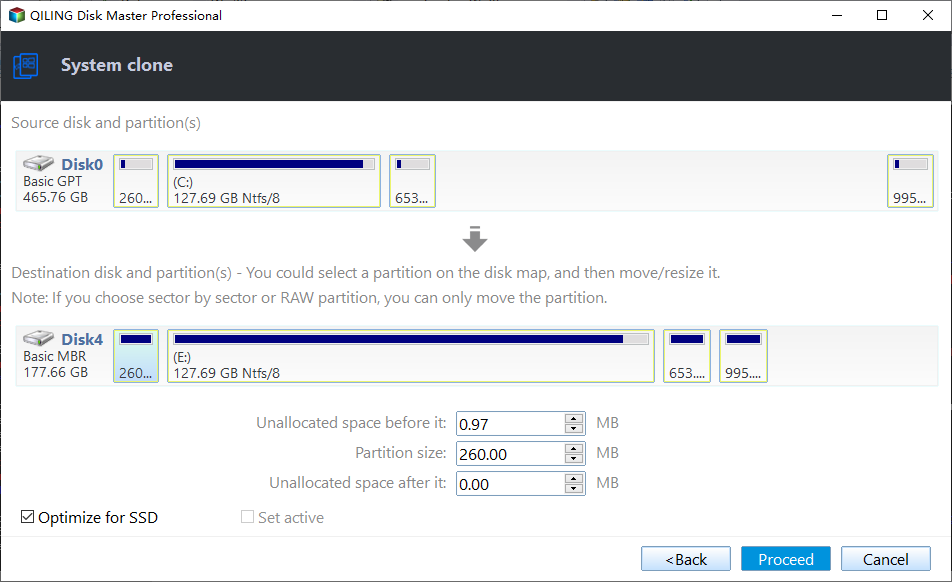7 Easy Ways to Perform Windows Server C Drive Cleanup
What happens when the C drive is full on the Server?
When the C drive of your Windows Server 2016 or 2019 becomes full, it can have several adverse effects on system performance and stability. Let's explore the potential consequences of a full C drive
①Decreased System Performance
The C drive is where the Windows Server operating system and its associated applications store temporary files and system data. When the C drive runs out of space, it can lead to a significant decrease in system performance. The server may become slow and unresponsive, impacting productivity and user experience.
②System Instability and Crashes
A full C drive can result in system instability and crashes. When the operating system cannot write essential system files or create temporary files due to insufficient space, it can lead to errors, system freezes, and even crashes. This can disrupt critical services and impact the overall stability of the server.
③Limited Functionality
Some system functions may not work properly or become unavailable when the C drive is full. For example, Windows updates and software installations may fail, as they require free space to complete the process. This can prevent you from keeping your system up to date and installing necessary software.
④Data Loss and File Corruption
When the C drive is near full capacity, it increases the risk of data loss and file corruption. If the drive runs out of space while writing or saving data, it can result in incomplete or corrupted files. Additionally, system crashes caused by insufficient disk space can lead to data loss if files were being processed or modified at the time of the crash.
To mitigate these issues, it is important to regularly monitor the disk space usage on the C drive and take proactive measures to perform Windows Server C drive cleanup.
How do I clean up my C drive on Windows Server
How to free space in C drive? Here are 7 ways to tell you the answers.
- #1. Turn off hibernation
- #2. Run Disk Cleanup
- #3. Delete temporary and downloaded files
- #4. Delete internet temporary files
- #5. Empty the Recycle Bin
- #6. Uninstall unnecessary Apps
- #7. Turn on the storage sense
- Further reading: Can I have a larger C drive space?
#1. Turn off hibernation
By default, hibernate mode is enabled in Windows Server, and it doesn't have any detrimental effects on your computer's performance. Therefore, it is not necessary to disable it if you do not use it.
However, enabling hibernate mode reserves a portion of your disk space for its files, specifically the hiberfil.sys file, which occupies approximately 75 percent of your computer's installed RAM. For instance, if you have 8GB of RAM, the hiberfil.sys file will consume around 6GB of your hard drive space. Here is how you can do it to turn off hibernation:
Step 1. Press Windows + R key and then type cmd in the Run box. And click OK to open the CMD.
Step 2. Type powercfg.exe /hibernate off command in the CMD window and hit the Enter key.
Entering the command will turn off the hibernation for you. It will free up some space in your C drive and clean it.
#2. Run Disk Cleanup
On Windows Server, the C drive is responsible for storing program and server-related files. However, over time, unnecessary files can accumulate and consume valuable disk space. To reclaim disk space and optimize your Windows Server C drive, you can utilize the Disk Cleanup tool. Here are the steps to perform a disk cleanup on your Windows Server
✍Note: Make sure you only clean the unnecessary files and prevent deleting any necessary Server computer files.
Step 1. Open File Explorer and locate at C drive. Then right-click the C drive to open Properties.
Step 2. Under the General tab, locate and then choose Disk Cleanup.
Step 3. Then in the Disk Cleanup window, tick the box that you want to delete the corresponding item. Then confirm by choosing OK.
#3. Delete temporary and downloaded files
You can delete temporary files without running Disk Cleanup. The temporary files are usually stored in C:\Windows\Temp, or C:\Documents and Settings\username\Local Settings\Temp. The files in both folders can be deleted directly.
#4. Delete internet temporary files
To delete Internet temporary files, you can do the following steps:
Step 1. Open Internet Explorer (IE), click Tool and select Internet Options.
Step 2. Then in the Internet Options window, click Delete. And continue within the Delete Browing History window, where you can choose to delete temporary files, history and cookies, etc.
#5. Empty the Recycle Bin
When you delete files from your PC, they are not immediately removed from your hard drive. Instead, they are moved to the Recycle Bin, where they continue to occupy valuable storage space. To free up space on your C: drive, it is important to regularly empty the Recycle Bin.
There is how you can do it:
Step 1. Locate at the Recycle Bin icon on your desktop.
Step 2. Right-click on the Recycle Bin icon.
Step 3. From the context menu, select Empty Recycle Bin.
Step 4. Click on Yes when a warning message appears.
It is important to note that once you empty the Recycle Bin, the deleted files cannot be recovered using standard methods. Therefore, it is crucial to double-check the contents of the Recycle Bin before emptying it to avoid mistakenly deleting important files.
#6. Uninstall unnecessary Apps
Over time, your C drive may accumulate large applications that are no longer needed or used. By removing these applications, you can reclaim storage space and optimize the performance of your server. Here's how you can uninstall applications.
Step 1. In the search bar, search and open Control Panel.
Step 2. In the Control Panel window, select Uninstall a program under the Programs section.
Step 3. Then you just need to decide the needless applications and uninstall them one by one.
#7. Turn on the storage sense
Storage sense is available in Windows Server which can help you manage your system location automatically by wiping out unnecessary files and data.
Step 1. Open Settings and locate at Storage section of the System menu.
Step 2. Toggle the Storage Sense slider. And then you just need to configure the storage sense settings.
Further reading: Can I have a larger C drive space?
Qiling Disk Master is a professional and reliable cloning software that can supplement disk upgrades, for example, HP Omen 15-ce0xx RAM upgrade. Beside free up disk space Windows Server 2012R2, you can also upgrade your original C drive to a large drive. This software has many shining points:
☂Intelligent clone: it is efficient because it allows you to copy only used sectors from one drive to another while skipping bad sectors.
☂Multiple choices: it offers you 3 cloning options, you can choose clone disk, partition and system as you need.
☂Sector by sector clone: it allows you to clone all sectors of a disk to another. However, it requires the destination disk to have at least the same capacity as the source disk.
Now download Qiling Disk Master and launch it.
Step 1. Select System Clone after you choose Tools and utilities tab page.
Step 2. Then the partitions included in the C drive will be selected by default.
Step 3. Then you need to choose a bigger disk to store the cloned C drive image and choose Next.
✍Note: If there are any important data stored on your destination disk, please make a proper backup for the whole disk will be over-written once the clone process completes.
Step 4. Confirm by clicking Proceed to clone your C drive.
Conclusion
You can successfully perform Windows Server C drive cleanup via the above 7 ways. Notably, all the measures can only save more storage space on the C drive, which means that if you want a larger storage location, you need to upgrade your C drive. Treated as the best external hard drive cloning software, Qiling Disk Master Server is a professional system cloning software that can help you clone your C drive to a bigger disk.
Related Articles
- Fixed: C Drive Is Getting Full Automatically in Windows Server 2012 R2
- The Best Windows Server 2012 (R2) Disk Cleanup Tool
- Windows Server Backup Disk Full | Solutions & Workaround
- Benefits of SSD over HDD
What're the benefits of SSD over HDD? In this article, you'll find the answer and meanwhile, you'll learn how to clone data from HDD to SSD.
